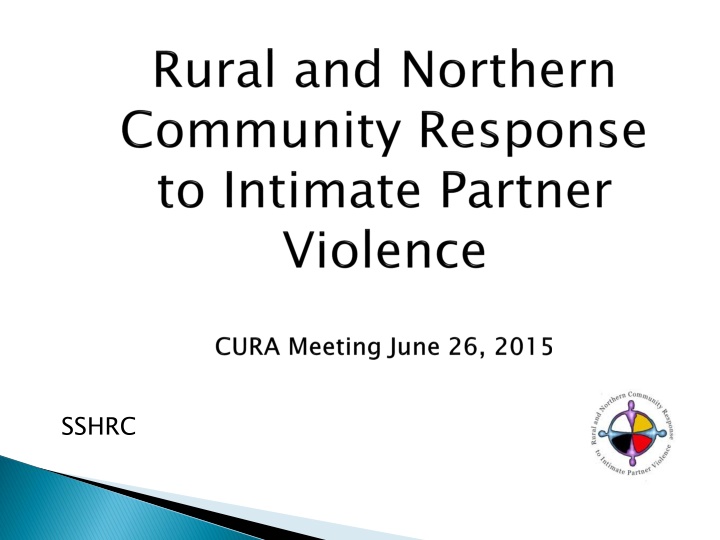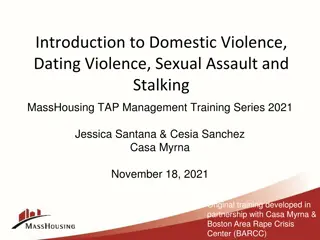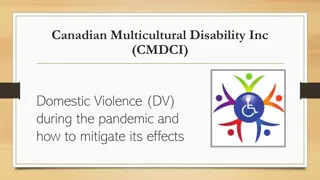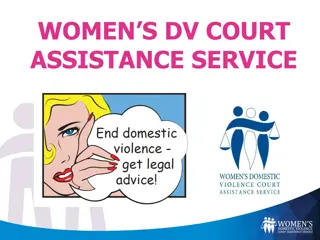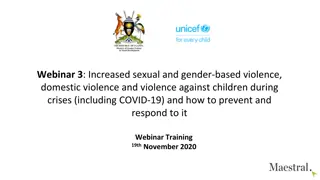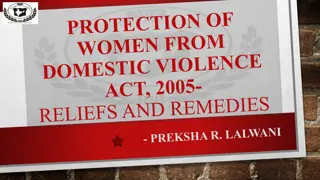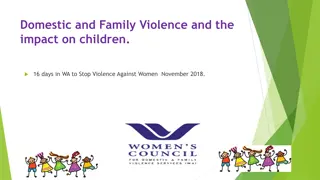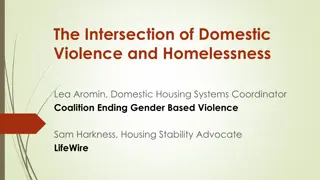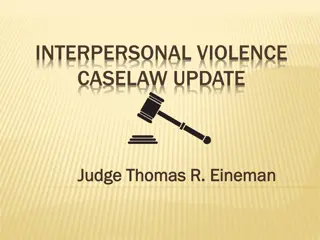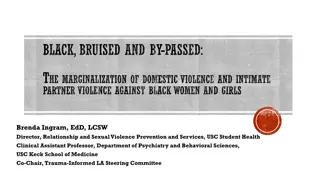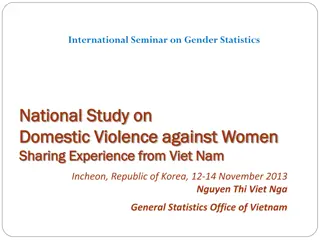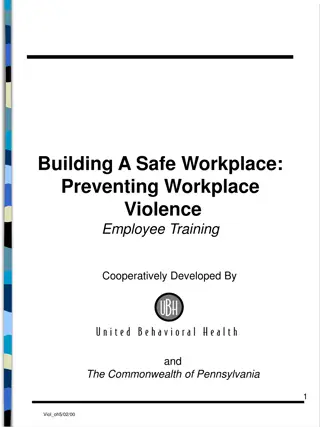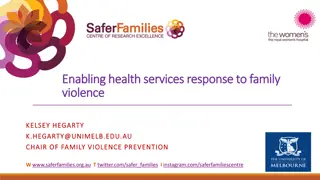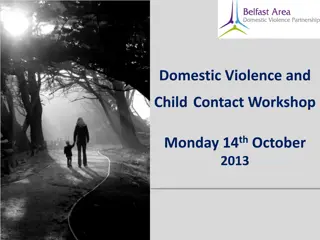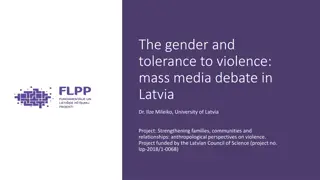Domestic Violence in Manitoba: Overview and Insights
Manitoba exhibits concerning rates of domestic violence, particularly affecting Aboriginal women. This study delves into general, rural, and northern contexts, shedding light on critical incidents, community characteristics, and professional knowledge. Analysis of RCMP/police data, service provider recommendations, and practical issues reveal key findings in this in-depth exploration.
Download Presentation

Please find below an Image/Link to download the presentation.
The content on the website is provided AS IS for your information and personal use only. It may not be sold, licensed, or shared on other websites without obtaining consent from the author.If you encounter any issues during the download, it is possible that the publisher has removed the file from their server.
You are allowed to download the files provided on this website for personal or commercial use, subject to the condition that they are used lawfully. All files are the property of their respective owners.
The content on the website is provided AS IS for your information and personal use only. It may not be sold, licensed, or shared on other websites without obtaining consent from the author.
E N D
Presentation Transcript
1. Recommendations from service providers 2. Critical incidents 3. Characteristics of communities 4. Our professional knowledge 5. RCMP/Police data on incidents 6. Practical issues
One rural community/area selected One northern community/area selected Profiles consisted of : Creation of demographic profile Media scan Focus groups/interviews with service providers in selected areas
N=139 articles Provincial n=14 Rural n=93 Northern n=32
Internet search engines using a list of keywords (e.g. intimate partner violence, abuse, domestic violence, rural, northern) Google Alerts to notify of new articles posted Media accounts published between 2008 2015 15+ news sources used. These included: Winnipeg Free Press Metro Winnipeg Winnipeg Sun National Post Portage Dailygraphic The Carrillon Brandon Sun CTV News CBC News Pembina Valley Online Nickel Belt News Thompson Citizen The Globe and Mail Etc.
Section I: Manitoba/Provincial overview General news articles on domestic violence rates in Manitoba Media accounts of missing and murdered Aboriginal women in Manitoba Section I: Manitoba/Provincial overview Section II: Rural General violence in rural community/area Intimate partner violence in rural Manitoba Case-specific reports of high-profile violent incidents with a connection to rural community/area Public awareness campaigns about intimate partner violence in rural community/area Section II: Rural Section III: Northern General violence in northern Manitoba Intimate partner violence in northern Manitoba Case-specific reports of high-profile violent incidents with a connection to northern community/area Public awareness campaigns about violence against women in northern community/area Section III: Northern
Manitoba had second highest incidence of police-reported acts of violence towards women of the Canadian provinces. Manitoba's Aboriginal women and girls make up about half the female homicide victims in the province 92% of these victims were killed by an acquaintance, spouse or other family member 89% of the [female] victims were killed by men.
Themes in the Media: Rural Emotional pain of the families/community Community support affected by violence and for public awareness campaigns, activism, supporting local shelters. Community support for families who have been Recognition of the challenges rural women face. Recognition of the challenges rural women face. How are people supposed to want to live in this town with all that's gone on? It's not a safe place sometimes and you don't feel comfortable where you live.
Very high violent crime rates. 2013 Thompson is Canada s most violent crime city Statistics Canada data. Very high violent crime rates. For example, in Northern challenges challenges Community support and action Community support and action [The accused] is not favourable towards crime and he does not have a propensity towards violence It is not surprising that in this context of community and social dysfunction, that (he) became involved with the criminal justice system (Judge s comments on male youth convicted in a fatal stabbing attack)
Across rural and northern communities in Manitoba, media accounts reflect: A recognition of IPV occurring Community action
Three focus groups Two individual interviews Participants (n=23) 22 female 3 Aboriginal Service Providers: RCMP Shelter Disability Services Education Paramedics Therapists Housing Friendship Centre
Isolation Normalization/Denial of IPV Housing Transportation Confidentiality Lack of/limitations of resources Shelter beds/length of stay Lack of second stage/transition housing Multiple system involvement with lack of coordination Lack of resources/programs for children and youth Lack of programming for men
Education Increased Collaboration Address Poverty More Resources Leadership
Community Mobilization We re incredible in the country when you think of all the different hats we wear .
Two-in person focus groups Two telephone focus groups Participants (n=14) 12 female 6 Aboriginal Service Providers: Shelter Community Justice Mental Health Therapists YWCA Education Child & Family Services Family Conciliation Healthy Child MB/Addictions Family Support Program
Isolation Normalization/Denial of IPV Legacy of colonization Transportation Lack of funding to return home Housing Homelessness Lack of housing limits ability to get children out of care Community Politics Confidentiality Shame/Fear
Addictions Service providers Not healthy Not adequately trained Inconsistent/inappropriate response to women High turnover New staff Lack of/limitations of resources Shelter beds/length of stay Lack of second stage/transition housing Waiting lists for services Multiple system involvement with lack of coordination Controlling systems Funding battles Lack of programming for men Overall reactive rather than proactive
Education Increased collaboration Address poverty More/Improved resources Youth LGBT Harm reduction strategies Leaders and Elders speak out More cultural and traditional teachings
Community mobilization Students empowering communities Service providers do collaborate
Similarities in challenges identified in rural and northern groups More challenges/challenges more pronounced in the north Both rural and northern groups identified education as the key strategy to create non- violent communities and the need for increased collaboration among systems and service providers
Further analysis Content analysis of media scan Further develop narratives for rural and northern communities Improve maps Putting it all together Publication plan
